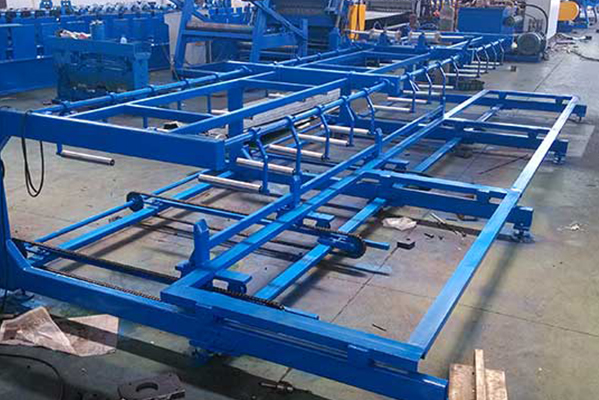Navigation Menu
Contact Us
- Email:
- info@wxavatar.com
- Address:
- Yurong Village, Yuqi Street, Huishan District, Wuxi, China.
Release Date:Mar 20, 2025 Visit:58 Source:Roll Forming Machine Factory
The optimal material selection for a solar rack forming machine hinges on balancing durability, wear resistance, cost, and application-specific requirements. Here's a structured breakdown:
Key Considerations:
1.Function & Stress: Forming machine components (dies, rollers) endure high stress and friction, necessitating materials with high hardness, wear resistance, and longevity.
2.Workpiece Material: Solar racks are typically made from aluminum or galvanized steel. The machine must handle these materials without excessive wear.
3.Environmental Factors: Corrosion resistance may be needed if the machine operates in humid environments.
Recommended Materials:
1.Tool Steels:
D2 Steel: High-carbon, high-chromium tool steel offering excellent wear resistance and toughness. Ideal for cold-forming processes (common in solar rack production). Retains sharp edges, suitable for dies.
H13 Steel: Hot-work steel with superior thermal fatigue resistance. Preferred if the forming process generates heat (e.g., high-speed operations). Combines hardness with toughness.

2.Coatings:
Apply chromium nitride (CrN) or titanium nitride (TiN) coatings to enhance wear resistance and reduce friction, extending component lifespan without costly bulk material upgrades.
3.Tungsten Carbide:
Use selectively in extreme-wear areas (e.g., guide rollers) for unmatched hardness. Though brittle and expensive, it’s cost-effective for critical high-abrasion zones.
4.Stainless Steel (Optional):
440C Martensitic Stainless Steel: Offers moderate corrosion resistance and can be hardened. Suitable for components exposed to moisture but less critical for direct forming surfaces.
Cost & Maintenance:
Tool Steels: Higher initial cost than carbon steel but reduce long-term downtime and replacement frequency.
Coatings: Cost-effective for enhancing performance without full material substitution.
Tungsten Carbide: Reserve for high-impact areas to balance expense and durability.
Industry Practices:
Cold-Forming: D2 steel is widely used for dies in cold-forming galvanized steel or aluminum racks.
High-Speed/Hot-Forming: H13 is preferred for thermal stability.
Conclusion:
The best materials for a solar rack forming machine are D2 or H13 tool steels, depending on thermal conditions, complemented by wear-resistant coatings. Incorporate tungsten carbide in critical high-wear zones for enhanced durability. This approach ensures a balance of performance, longevity, and cost-efficiency tailored to solar rack production demands.